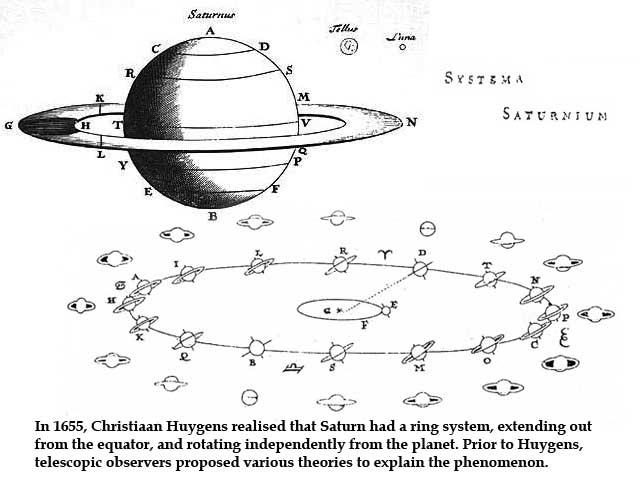The Ringed Planet
The first astronomers to use telescopes struggled to make sense of Saturn's rings. Galileo thought the ear-like protruberances might be close-in moons, but was puzzled when they disappeared for a time.Christian Huygens deduced that Saturn had a ring system, inclined to the ecliptic. Twice each Saturnian year, the plane of the rings aligned with our line-of-sight, rendering them invisible from Earth.
Careful observation from Earth discovered the structure, the orbital speeds and the composition of the ring material. Saturn's rings consist mostly of dust-grain sized particles of water ice. Larger moons patrol the gaps and edges.
The Voyager Missions showed that each of the Gas Giants has a ring system. We now understand that planetary rings are temporary structures formed from meteroite impacts on moons and/or the break up of bodies that approach too close to the planet. Saturn's extensive ring system is the result of the break up of an icy body that approached too close. It must have formed within the last three hundred million years.
April 2005

1 of 5